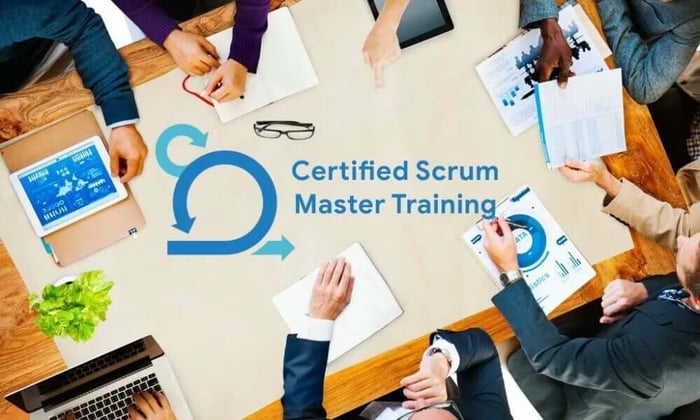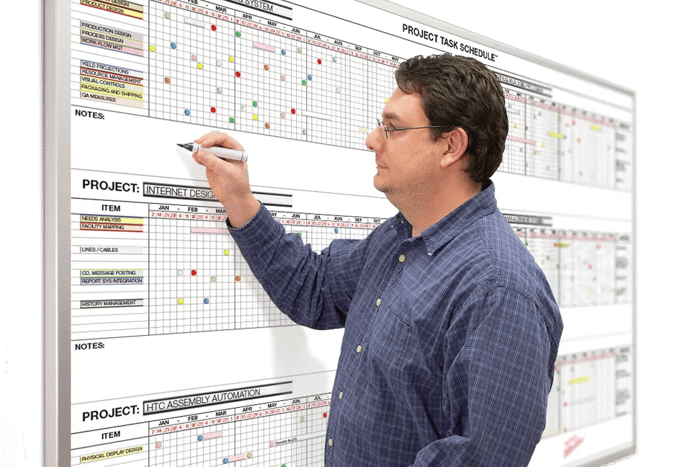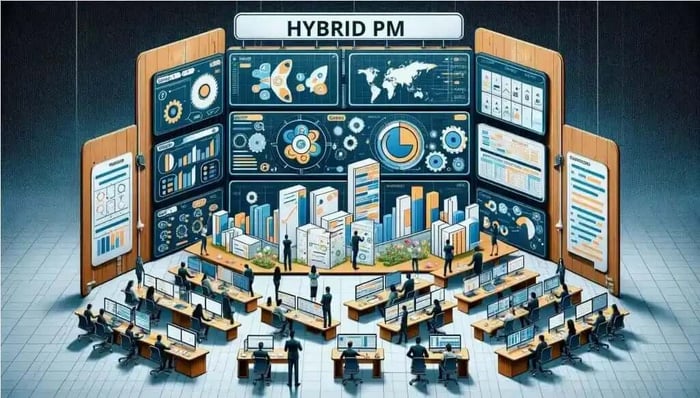Table of Contents
- So You Wanna Be a Certified Scrum Professional? Let's Scrum Things Up!
- What Is Certified Scrum Professional (CSP) Certification?
- Why Certified Scrum Professional (CSP) Certification in 2025? (Besides Looking Cool on LinkedIn)
- How to Become a Certified Scrum Professional (Step-by-Step)
- CSP vs Other Agile Certifications
- CSP Certification: Key Skills You’ll Learn
- Best CSP Programs to Consider in 2025
- 🧩 Real Career Impact: Success Stories from CSPs
- 📍 CSP vs. PMI-ACP vs. SAFe Certification
- 10 Lesser-Known Facts About CSP (with Sources)
- Final Thoughts: Ready to Go Pro?
- FAQs
So You Wanna Be a Certified Scrum Professional? Let's Scrum Things Up!
Ever felt like your team is a band, but everyone's playing a different tune? 🎶 Enter the Certified Scrum Professional (CSP) Certification — the rockstar-level credential that'll make you the maestro of agile orchestration. It's 2025, and if you're still managing projects like it's 2005 (hello, waterfall), we need to talk. This isn't just another certification. It's your backstage pass to elite Scrum status.
Let’s dive deep (with some charts, laughs, and maybe a few productivity hacks) into why CSP might just be the most powerful career move you can make this year.

What Is Certified Scrum Professional (CSP) Certification?
CSP is the pinnacle of Scrum mastery. It sets apart serious agile professionals from the crowd.
Becoming a Certified Scrum Professional means you're more than just aware of Agile practices — you embody them. It demonstrates that you've put in the hours, learned from the trenches, and know how to elevate teams to high-performance.
Who Offers It?
This certification is offered by the Scrum Alliance, one of the most trusted global organizations in the Agile and Scrum world.
CSP Tracks
There are two paths to CSP:
CSP-SM (Scrum Master Track)
CSP-PO (Product Owner Track)
Depending on your role, the journey and focus will differ slightly. Both, however, share the goal of shaping elite-level practitioners. When choosing your certification path, it’s helpful to understand the differences between CPMP vs PMP to ensure alignment with your career goals.
Why Certified Scrum Professional (CSP) Certification in 2025? (Besides Looking Cool on LinkedIn)
A breakdown of how CSP is evolving and why it matters more than ever.
Demand Is Booming 🚀
Organizations are scaling Agile beyond IT. With digital transformations accelerating, the need for high-level Scrum professionals is soaring.
Fun Fact: According to the Project Management Institute, over 75% of organizations will be using Agile practices by the end of 2025.
Career Benefits of CSP
Here's how CSP stacks up versus other certifications:
| Certification | Recognition Level | Career Boost | Cost | Renewal Frequency |
|---|---|---|---|---|
| CSP | High | 📈 Very High | $$$ | Every 2 Years |
| PMP | Very High | 📉 High | $$$$ | Every 3 Years |
| CSM | Medium | 📊 Moderate | $$ | Every 2 Years |
Note: CSP professionals report an average salary increase of 17% compared to non-certified Scrum roles.
It’s More Than a Badge
It’s about:
Leading agile transformations
Coaching teams to peak efficiency
Speaking fluent Scrum in high-stakes environments
Pro Tip: If you're considering academic options, several reputable institutions are offering project management certifications that align with global standards.
How to Become a Certified Scrum Professional (Step-by-Step)
Clear steps to help you go from good to elite.
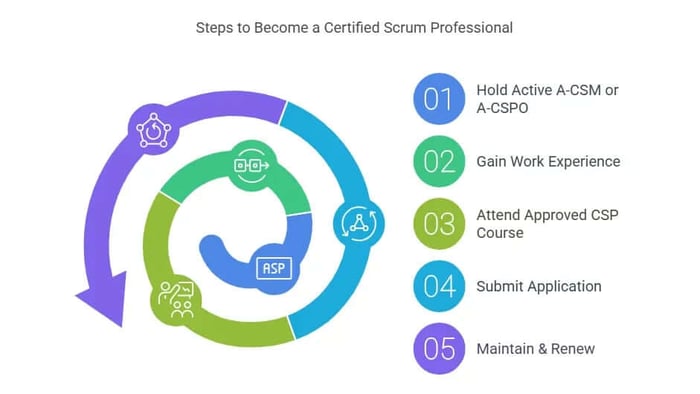
Step 1: Hold an Active A-CSM or A-CSPO
You can’t leapfrog into CSP. First, you need the Advanced Certified ScrumMaster (A-CSM) or Advanced Certified Product Owner (A-CSPO).
Step 2: Gain Work Experience
Minimum of 24 months of Scrum role experience (within the last 5 years) is required.
Step 3: Attend an Approved CSP Course
This is where the real magic happens. Courses include:
Advanced facilitation techniques
Systems thinking
Coaching frameworks
Step 4: Submit Your Application
Once training and experience requirements are met, you'll submit a CSP application on the Scrum Alliance portal.
Step 5: Maintain & Renew
You’ll need to earn SEUs (Scrum Education Units) to keep your CSP active. Renewal happens every 2 years.
CSP vs Other Agile Certifications
Side-by-side comparisons with the big names in project management.
| Feature | CSP | PMI-ACP | SAFe Agilist |
| Focus | Scrum & Agile Mastery | Broad Agile Frameworks | Enterprise Scaling |
| Prerequisites | A-CSM/CSPO + Experience | Agile Experience | Course + Exam |
| Recognition | High in Scrum Circles | High in PM Circles | Growing in Enterprises |
| Average Cost | $1,200 - $2,000 | ~$495 + Training | ~$1,000 |
| Ideal For | Scrum Pros & Coaches | Agile PMs | Agile Leaders |
CSP Certification: Key Skills You’ll Learn
A look at the career-transforming skills covered in the course.
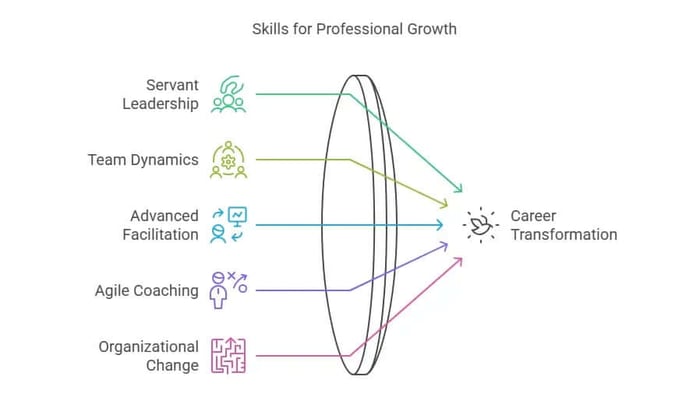
Servant Leadership: Powering teams by empowering individuals.
Team Dynamics: Handling conflict like a Jedi.
Advanced Facilitation: Because sticky notes and Sharpies aren’t enough.
Agile Coaching: From micro-managing to macro-leading.
Organizational Change: How to Lead Large-Scale Transformation.
Best CSP Programs to Consider in 2025
Top programs globally and what makes them stand out.
Scrum Alliance CSP Courses: The original and most trusted
ICAgile Authorized Trainers: Known for real-world, case-based instruction
LinkedIn Learning (for SEU maintenance only): Great for supplemental learning
🧩 Real Career Impact: Success Stories from CSPs
Every certification promises results, but what does the Certified Scrum Professional (CSP) certification really unlock in the real world? Here’s what some professionals have shared after taking the plunge:
🎯 Success Story 1: From Developer to Agile Coach
Name: Olivia B. – San Francisco, CA
Background: Senior Java Developer
Impact: Within six months of earning her CSP, Olivia transitioned into an Agile Coach role at a Fortune 500 fintech company. Her salary jumped by 32%, and she now leads Agile transformation programs globally.
"The CSP gave me the confidence and credibility to step into strategic conversations with senior stakeholders."
🚀 Success Story 2: Breakthrough as a Remote Scrum Consultant
Name: Ankit R. – Bangalore, India
Background: Scrum Master at a mid-sized IT firm
Impact: After earning the CSP, Ankit landed a fully remote contract with a European tech startup, increasing his income by 45% while enjoying location independence.
"It’s like leveling up your game — recruiters started approaching me."
📍 CSP vs. PMI-ACP vs. SAFe Certification
With so many Agile certifications out there, it’s easy to get overwhelmed. Let’s break down how CSP stacks up against PMI-ACP and SAFe to help you make the right call:
| Feature / Criteria | CSP (Certified Scrum Professional) | PMI-ACP (Agile Certified Practitioner) | SAFe (Scaled Agile Framework) |
|---|---|---|---|
| Focus | Scrum mastery | Broad Agile methods | Enterprise scaling |
| Recognition | High among Agile purists | Strong with PMI backing | Popular in large enterprises |
| Average Salary Boost | 25–35% | 15–20% | 20–30% |
| Validity | Renewable every 2 years | Renewable every 3 years | 1-year subscription model |
| Ideal For | Senior Scrum Masters, Agile Coaches | General Agile roles | Managers in large orgs |
| Cost | ~$250–$500 | ~$495 | ~$795 |
👉 If you want deep Scrum expertise and career agility, CSP is the clear winner. For broader Agile knowledge, PMI-ACP is decent. Go for SAFe if you're working in an enterprise setting.
10 Lesser-Known Facts About CSP (with Sources)
Even the pros might not know these — learn something new!
CSP holders often work in non-tech roles: Agile is everywhere now.
You don’t need a college degree: Experience and practice matter more.
CSPs are often Agile Coaches: Not just ScrumMasters!
SEUs can be earned through podcasts: Learning on the go FTW.
CSP exams are not mandatory: Unlike PMP.
Only ~6% of CSMs advance to CSP: It’s an elite group.
There’s a community portal for CSPs: Great for networking.
You can fail your CSP application: Be sure your experience is solid.
CSPs command higher contract rates: Especially in Europe & US.
You can mix CSP with other Agile certs, like SAFe, LeSS, or PMI-ACP.
Final Thoughts: Ready to Go Pro?
The CSP certification is more than a resume booster — it’s a mindset shift. It's how you go from doing agile to being agile. Whether you're chasing higher pay, deeper respect, or just want to lead high-performing teams like a boss 🦿, CSP is your launchpad.
Looking to get started with project management certifications that matter? Check out APMIC. We offer globally recognized certifications designed to elevate your career and put you in the front seat of Agile leadership.
FAQs
What is a Certified Scrum Professional (CSP)?
It’s an advanced Scrum certification for experienced Agile practitioners who want to lead teams and coach organizations.
Is CSP better than PMP?
It depends on your career path — CSP is better for Agile environments; PMP is ideal for traditional project management.
How long does it take to become a CSP?
Typically 2–3 years depending on experience and training.
Is the CSP certification exam hard?
There’s usually no exam, but the coursework and application are rigorous.
Does CSP increase salary?
Yes — CSP-certified professionals often see salary bumps of 10–20%.
Can you get CSP without CSM?
No, you must complete CSM and A-CSM first.
Is CSP worth it in 2025?
Absolutely. With Agile adoption booming, CSPs are in high demand.
Can I take CSP courses online?
Yes, many certified training partners offer 100% online CSP classes.

